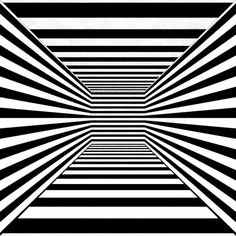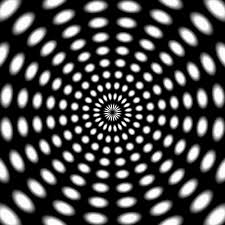|
LITR 4368 Literature of the Future |
Sample answers
for Essay 1:
|
 |
Kimberly Hall
May 4th,
2016
Conformity or Freedom: Dystopias and Diversity in Different Visions of
the Future
One of the most common fears in human adults is, unsurprisingly, the fear
of the unknown. And as time travel has, to my knowledge, not been invented yet,
the course of the future is entirely unknown. It is this fear of the unknown
that drives people in power to attempt to create a utopia, and in doing so
oppress individuality and the unpredictability of diversity. While science
fiction and speculative fiction are not widely considered relevant as
literature, they serve as effective tools for pointing out the flaws in ‘ideal’
societies. Three stories that we read in class, “Drapes and Folds”, “The Logical
Legend of Heliopause and Cyberfiddle”, and
Parable of the Sower, provide
examples of flawed utopias (or rather, dystopias), both low-tech and high-tech,
and criticize different kinds of enforced conformity. Finally, ecotopias such as
“Chocco”, alongside the new artistic and literary genre of solarpunk, provide a
hopeful vision for a future that embraces diversity.
In “Drapes and Folds”, society has progressed to a point where many
diseases have been eliminated and individuals have average lifespans of over one
hundred years. In the name of safety and equality, The Powers have also
experimented on national food sources, outlawed decorative fabrics, and
brainwashed and conditioned rebellious individuals into compliance. The main
character, Pearl, is distraught to discover that her best friend Diana has been
involuntarily brainwashed into agreement with the new FabricLaw dictating that
all manners of clothing were to be replaced with uniform ‘Bracies’, essentially
eliminating the appearance of different body types. Diana has also been
conditioned into a dislike for flavored food, which Pearl laments because Diana
had previously been a fierce proponent of flavored food and had rejected their
society’s ‘Approved Nutritional Procedure’ until it had become the only safe
option. Essentially, society enforced conformity by making it physically unsafe
to be individualistic.
While reading “Drapes and Folds”, I was immediately reminded of one of my
favorite short stories, “Harrison Bergeron” by Kurt Vonnegut. In “Harrison
Bergeron”, no one in society is allowed to be smarter, more athletic, or
better-looking than anyone else, and conformity is enforced by means of
‘handicaps’—weights for the more athletic, ugly masks for the more attractive,
and radios inside the ears of the more intelligent. Harrison Bergeron, the title
character, is shot on live television for refusing to wear his handicaps. The
two stories share the same criticism of societal progress: that in an effort to
create a utopia, society will essentially embrace and enforce dangerous levels
of conformity.
“The Logical Legend of Heliopause and Cyberfiddle” takes place in a much
different, but in some ways remarkably similar, society. Technology has
drastically advanced, at the expense of the natural world, and humans are now
able to create any experience that they want through virtual reality. The
characters view this society as utopian. However, when the main character,
Pryer, finds a manual on building a Stradivarius violin, others in Pryer’s
community are critical of his desire to build something manually as nonsensical
and nonconformist. When Pryer attempts to find help building the violin outside
of his community, the one person he finds is immediately killed for being an
outsider. These could both be direct criticisms of societies that value
conformity while presenting as a utopia—human creativity and individuality is
stifled, and those that live outside of a specific community’s norms are deemed
either silly and not to be taken seriously, or dangerous and to be eliminated.
A third example of this phenomenon exists in Octavia Butler’s
Parable of the Sower. A large
corporation called KSF buys a small coastal town called Olivar and turns it into
a company town, where all the residents work for the corporation in exchange for
a modest living space and relative safety. There is a selective screening
process, and applicants must meet specific standards to even get into Olivar,
and the residents of Olivar are then paid extremely poorly, so that they are
perpetually indebted to KSF and are forced to work longer and harder while never
being able to get out of debt. This kind of systemic oppression is rejected by
the main character and her father, because they recognize that this would
essentially acquiesce to slavery, and they value their personal freedom more
than any modicum of safety that Olivar could provide.
All of these stories have one thing in common—the powers that be attempt
to create a utopia by enforcing conformity, and in doing so the people exchange
individual freedoms for safety and unity. This is a common enough phenomenon in
utopian and dystopian literature. As Cynthia Perkins states in their essay
High Technology: Utopic, Dystopic, or
Ecotopic Future?, “...even utopias that were created with the best
intentions can become oppressive and dehumanizing.”
Dystopias seem to reign supreme when it comes to visions of the futures,
be they high-tech or low-tech, but fear not—the future is not entirely bleak.
The aforementioned stories all critique societies that try to create a utopia by
enforcing conformity, and so end up becoming dystopias. Ecotopias, on the other
hand, attempt to create peace in society by embracing natural diversity and
blending nature with compatible technology. An example of one such society is
that in the short story “Chocco”. In a kind of Socratic dialogue between the
characters Jon and Mikal, we learn about a dystopian past in which society
primarily valued profit and ignored diversity, only to die off and leave behind
almost nothing of real value to new societies. Jon and Mikal criticize the type
of conformity that exists in capitalism–the ideological conformity that asserts
that capitalistic ideals and for-profit culture exist as human nature, and the
subsequent rejection of those that do not fit the status quo. They also describe
how their own society has moved away from this by embracing biodiversity and
adapting technology to the environment rather than replacing it.
Jon
(more than Mikal) also accepts that they do not have a perfect society, and that
it is likely that they never will, rejecting even the idea of a utopia because
of its likelihood of twisting into a dystopia. He also sees that they have a
free and peaceful society and is cautiously optimistic about the future of his
community. This hope for a better future exists in speculative fiction in the
form of a new genre called solarpunk, described in Jet Heer’s
The New Utopians as “a heartening
sign that the dream of a better tomorrow is still possible”. Solarpunk as a
genre accepts that there are no perfect societies, and embraces the diversity
found both in the natural world and inside people as a means for striving for a
better future. People are allowed to be fully free, find strength in diversity,
and live in harmony with nature. I believe that this is a hopeful kind of vision
for the future that is desperately needed in fiction–if all we have to look
forward to is an oppressive dystopia, without freedom and without hope, what
reason do we have to keep pushing forward?




